The Best?
Of the seven images presented here today, which two are the strongest? Please leave a comment letting us know why you made your choices. I think that most folks will agree on at least one of the images below. I will share my two favorites with you here in the nest Catching Up blog post.
What’s Up?
On Saturday morning I worked here at ILE with Brendan E. Burns. Brendan is joining me for two days on the Hooptie Deux and is signed up for the DeSoto IPT. Brendan looks as if he is about 16 years old. He works as an investment analyst. He is tall and fit. He had been working with some very limited Canon gear when he signed up for the IPT. After a phone consultation, he purchased a Sony a1, the 200-600 G lens, and a 1.4X TC. Then he bought Bill Schneider’s Sony 600mm f/4 lens before it was even listed. So what does he think of Sony? Sony is in a different universe. The autofocus system is beyond amazing. Brendan has been working away from home in an AirBnB in St. Pete and has been photographing at DeSoto most every morning and afternoon. We reviewed some of this recent images. I was beyond impressed. For a relative beginner, his stuff was simply excellent. And best of all, he wants to improve. For me, meeting a bright young man who loves bird photography was an absolute pleasure.
With today’s post, I am almost caught up with unanswered questions past and will do a second post soon that will bring everything up to date.
Today is Sunday 27 March 2022. I am headed to Gatorland for an In-the-Field Session with Nikon shooter Jonathan Hoiles. Wherever you are and whatever you are doing, I hope that you too have a great day. This blog post about two hours to prepare and makes seventeen days in a row with a new one.
Please remember to use the B&H and Amazon links that are found on most blog pages and to use the BIRDSASART discount code at checkout when purchasing your new gear from Bedfords. Please, also, consider joining a BAA IPT. You will be amazed at how much you will learn …
Very Short Notice Hooptie Deux Roseate Spoonbill Opportunities
Morning Roseate Spoonbill Sessions: 7-10am on the boat
Tuesday 29 March 2022: $500 includes the boat fees, waders, and in-the field instruction.
Limit 5, Openings: 1.
Wednesday 30 March 2022: $500 includes the boat fees, waders, and in-the field instruction. Limit 5, Openings: 2..
Do Both Mornings for $950.
Add a working brunch with image review: $125.00.
Add Monday and/or Tuesday afternoon at a nearby wading bird rookery: $150.00.
There are still 3 spots left on the Hooptie Deux spoonbill trips. Please contact me via e-mail to reserve a spot. Payment by cash or check before boarding the boat will be fine.
|
|
|
This image was created on 12 April 2021. While seated on the damp sand, I used the no-longer-available Induro GIT 304L/Levered-Clamp FlexShooter Pro-mounted Sony FE 600mm f/4 GM OSS lens and The One, the Sony Alpha 1 Mirrorless Digital Camera. IS 2000. The exposure was determined via Zebras with ISO on the rear wheel: 1/1000 sec. at f/4 (wide open) in Manual mode. AWB at 7:45:05am on a mostly sunny morning. Tracking: Zone AF-C performed very well. Be sure to click on the image to enjoy a higher-res version. Image #1: Royal Tern pair: pre-copulatory stand |
Surprisingly, the Higher Perspective
In the Royal Terns Screwing Around: Is Lower Always Better? blog post here, I asked of the two featured images, Which is the better perspective?
Somewhat surprisingly, I preferred Image #1, the image made from a higher perspective — seated. I agree that Image #2 is the stronger image overall, but liked seeing the greenish algae stains on the sand in the first image. In addition, I did not like the greenish-gray line going through the birds in the second image.
|
|
|
This image was created on 19 February 2022, the scouting day for the Homer/Kachemak Bay Bald Eagle IPT. I used the hand held Sony FE 70-200mm f/2.8 GM OSS II lens with the Sony FE 1.4x Teleconverter (at 195mm) and The One, the Sony Alpha 1 Mirrorless Digital Camera.. The exposure was determined via Zebras: ISO 400. 1/4000 second at f/4 (wide open). AWB at 11:02:07am on then sunny morning. a somewhat foggy afternoon. Tracking: Zone AF/C with Bird-Eye/Face Detection performed perfectly. Click on the image to enjoy a high-res version. Image #2: Bald Eagle beginning dive – B |
All Razor Sharp. All the Time!
In the All Razor Sharp. All the Time! blog post here, opinions as to which was the strongest image in the series were widely divided. Most folks liked Images #1 and #3. Image #2, which was my favorite, received only two mentions. I liked all three dorsal views, but the upper wings surfaces in the second image were well lit. That was not quite true in the first and the third images.
|
|
|
This image was created on 20 February 2022, the first day of the Homer/Kachemak Bay Bald Eagle IPT. I used the hand held Sony FE 70-200mm f/2.8 GM OSS II lens with the Sony FE 1.4x Teleconverter (at 280mm) and The One, the Sony Alpha 1 Mirrorless Digital Camera.. The exposure was determined via Zebras. ISO 1600. 1/2500 second at f/4 (wide open). AWB at 4:35:37pm on a then-cloudy bright afternoon. Tracking: Zone AF/C with Bird-Eye/Face Detection performed perfectly. Click on the image to enjoy a high-res version. Photo courtesy of and copyright 2022: Anita G. North |
The Eagle-Over-the-Mountain Photo Contest
In the The Eagle-Over-the-Mountain Photo Contest blog post here, a zillion folks commented. Many favored Anita’s fine image; my image got just enough votes to eke our first place. I liked Anita’s image above just a bit better than mine. That said, I love mine. 🙂
|
|
|
This image was created on 28 February 2022, the third day of the second Homer/Kachemak Bay Bald Eagle IPT. I used the hand held Sony FE 70-200mm f/2.8 GM OSS II lens with the Sony FE 1.4x Teleconverter (at 280mm) and The One, the Sony Alpha 1 Mirrorless Digital Camera.. The exposure was set using Zebra technology with ISO on the thumb dial: ISO 640: 1/6400 sec. at f/4 (wide open). AWB at 10:05:40am on a sunny morning. Tracking: Zone AF/C with Bird-Eye/Face Detection performed perfectly. Click on the image to enjoy a high-res version. Image #2: Red-breasted Merganser drake in flight |
|
|
|
This image was created on 26 February 2022, Day One of the second 2022 Homer/Kachemak Bay IPT. Again, I used the hand held Sony FE 200-600mm f/5.6-6.3 G OSS lens (at 600mm), and The One, the Sony Alpha 1 Mirrorless digital camera. ) The exposure was determined using Zebra technology with ISO on the Thumb Dial. ISO 500: 1/1600 second at f/7.1 (stopped down 1/3 stop). AWB at 9:49:17am on a sunny morning. Tracking: Upper Zone with Bird/Face-Eye Detection performed perfectly. Be sure to click on the image to enjoy a high-res version. Image #2: Bald Eagle posing on perch
|
Miracle Homer Flight Shots –faster than a speeding bullet!
In the Miracle Homer Flight Shots –faster than a speeding bullet! blog post here, I loved and was amazed by both images, but liked Image #2 (above) best because of the better view of the near underwing. As some suggested, I like the distant background better in Image #1.
Homer YouTube Bald Eagle Video and Announcing the 2023 Homer/Kachemak Bay Bald Eagle IPTs
In the Homer YouTube Bald Eagle Video and Announcing the 2023 Homer/Kachemak Bay Bald Eagle IPTs blog post here, I liked Image #1 but #2, was my favorite. What can I say? I am a sucker for those pure backgrounds and I liked the bird being a bit larger in the frame as well.
My Thoughts on Background Softness (Bokeh?) Simplified
In the My Thoughts on Background Softness (Bokeh?) Simplified blog post here, options on the better background were evenly decided. I agree — I like both equally and could not pick a favorite.
|
|
|
This image was also created on Saturday 12 March 2022, the morning of the day that the colts had vanished. Again I used the hand held Sony FE 70-200mm f/2.8 GM OSS II lens with the Sony FE 2x Teleconverter (at 400mm), and The One, the Sony Alpha 1 Mirrorless Digital Camera.. The exposure was determined using Zebra technology with ISO on the Thumb Dial. ISO 1000: 1/250 second at f/8 (stopped down one stop). AWB at 8:04:45am on a cloudy morning. Tracking: Zone AF/C with Bird-Eye/Face Detection performed perfectly. Click on the image to enjoy a high-res version. Image #2: Sandhill Crane colt: folded wing detail |
In Memoriam: Not! More on the Sony 70-200 f/2.8 II GM
In the In Memoriam: Not! More on the Sony 70-200 f/2.8 II GM blog post here, everyone who commented like Image #1 best. I disagreed. I love, love, love Image #2 above. Why? The delicate,folded, growing wing is framed perfectly. It is hard to believe that in about six weeks the colts will be flying. Despite the extra d-o-f — stopped down one full stop, the background is pleasing (because I was so close to the subject). In addition, I have been trying for this shot for close to two decades. This one is the best by miles!
|
|
|
This image was created on 20 February 2022, day one of the first 2022 Homer/Kachemak Bay IPT. I used the hand held Sony FE 200-600mm f/5.6-6.3 G OSS lens (at 312mm), and The One, the Sony Alpha 1 Mirrorless digital camera. ) The exposure was determined using Zebra technology with ISO on the Thumb Dial. ISO 1600: 1/1000 second at f/6.3 (wide open). AWB at 11:51:21am in the shade on a cloudy-bright day. Tracking: Spot S with Bird/Face-Eye Detection performed perfectly. Be sure to click on the image to enjoy a high-res version. Image #2: Five Bald Eagles on radiolarian chert
|
Nine Out of Ten Ain’t Bad. And One Tough Question …
In the Nine Out of Ten Ain’t Bad. And One Tough Question … blog post here, everyone (including me) agreed that Image #2 above, was by far the stronger image.
The nine out of ten referred to nine good head angles in the two photos combined. The eagle on our left in Image #1 is facing away. I also asked a high level image design/field-craft question. I wrote, I really wanted to take one step more up the slope, but refrained from doing so in fear of scaring off one or more to the carefully arranged adult eagles. Why did I want to take one more step up the slope?
Jerry Turner answered correctly when he commented: One more step up the slope up would have raised the horizon above the Eagle’s head on the right in Image 1.. Well done Jerry!
Nancy’s DeSoto IPT Experience
In the Nancy’s DeSoto IPT Experience blog post here, I liked both images with a slight preference for the vertical.All but one of the folks who commented liked the vertical image because the bird is so much larger in the frame. Kudos to Ted Willcox for swimming agains the tide. He wrote: Image #1 is my favourite. I love the composition, and I like the feeling of more room around the bird.
Typos
With all blog posts, feel free to e-mail or to leave a comment regarding any typos or errors.

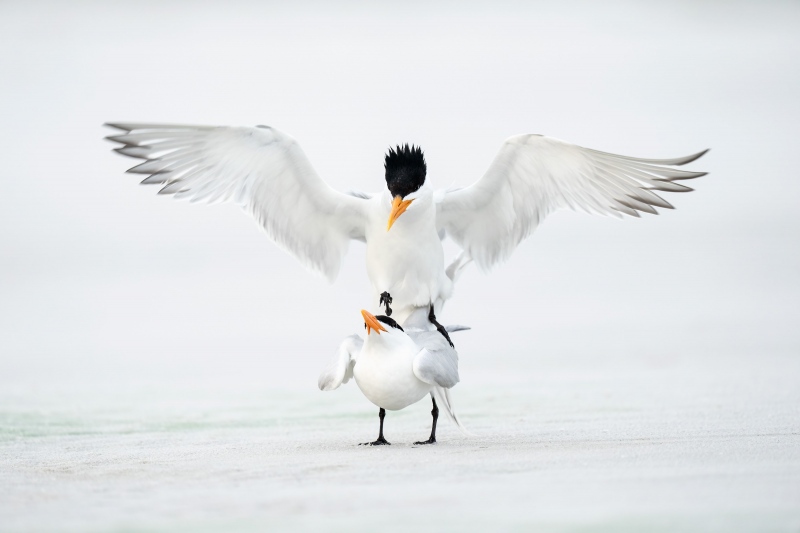
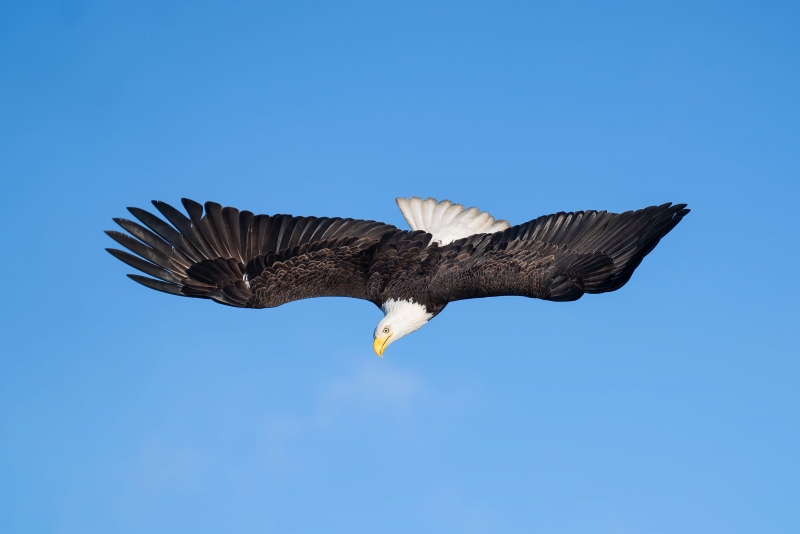
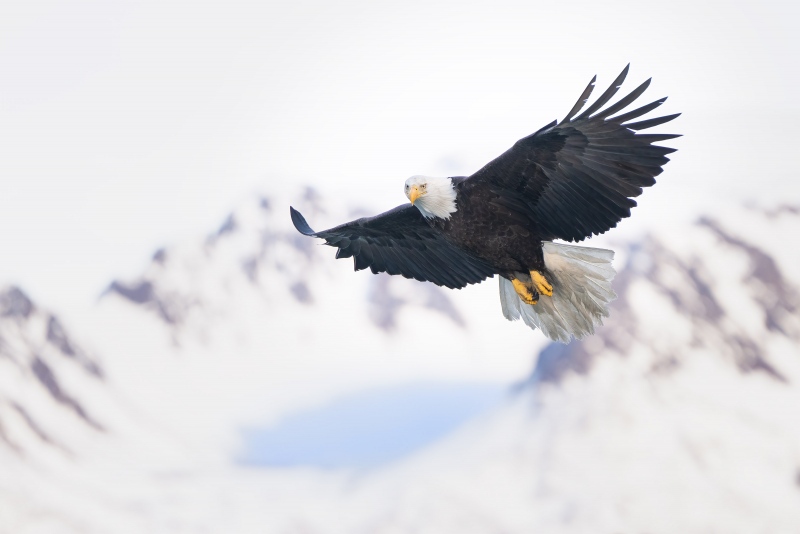
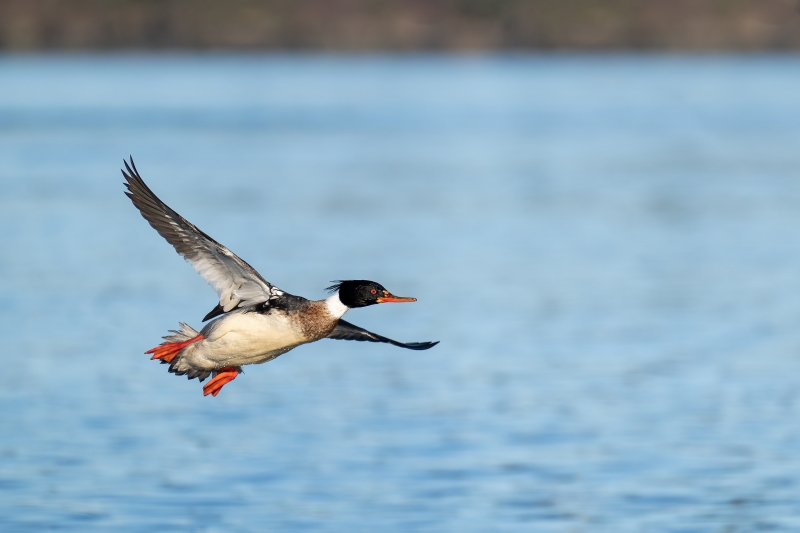
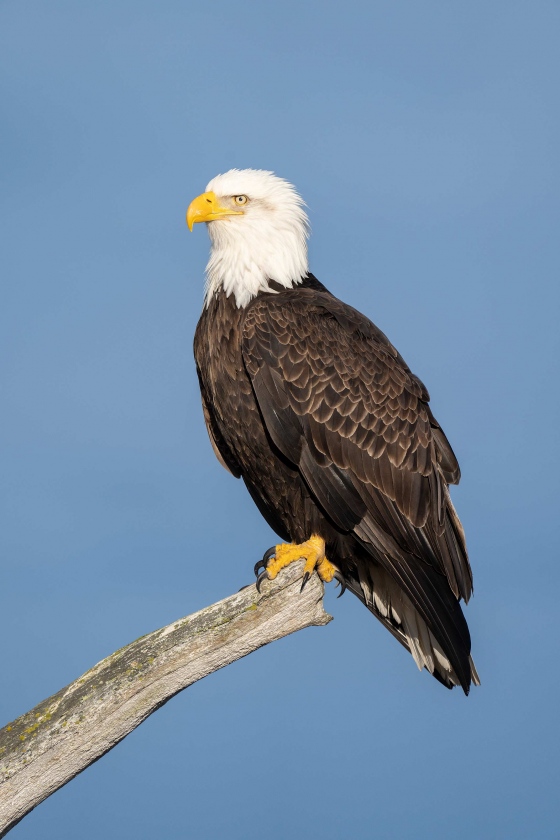
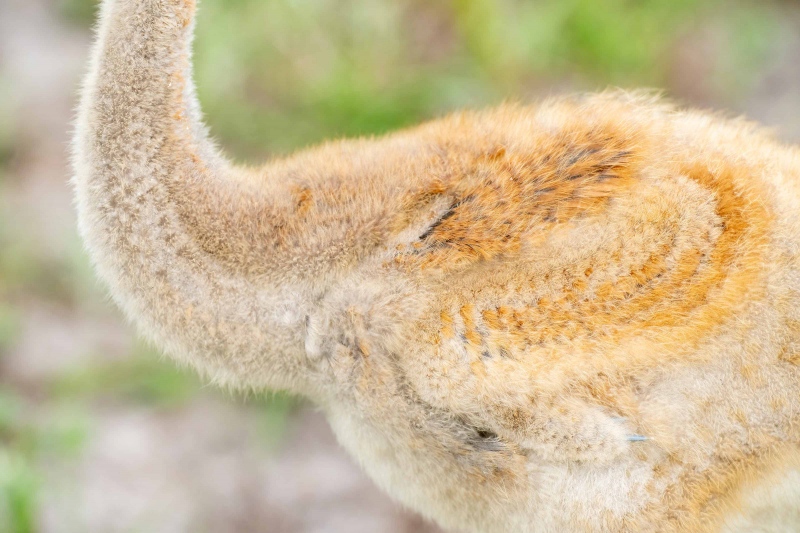
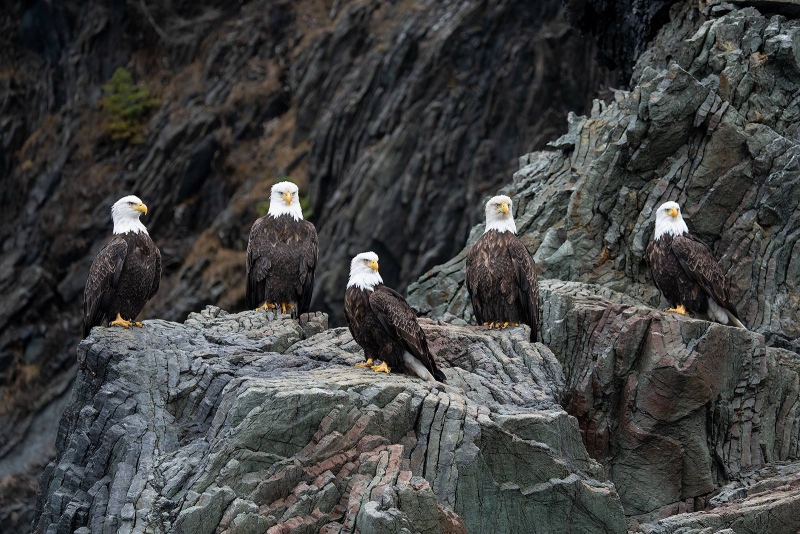













I think you had a feeling of the outcome before you posted the images, and I’ll add to the chorus. The last image of the eagles on the chert is the most impactful primarily because of the emotive content and it is simply wonderful in composition and execution.
Image 2 looks like a Mount Rushmore of eagles.
Oops, wait, most of them say Image 2. I’m talking about the last image.
Artie
These are all fantastic but the last one, The Freedom 5 for me is the greatest ever and is America Strong, on the rocks such a beautiful image!
Always with love b